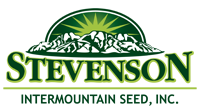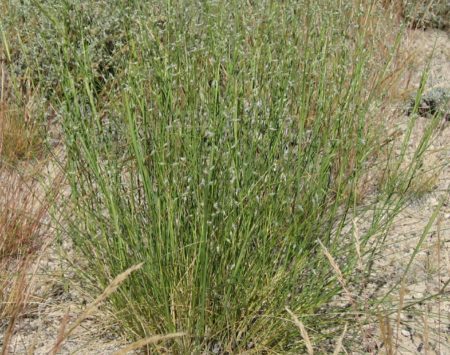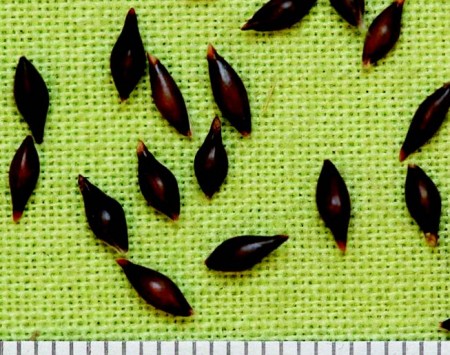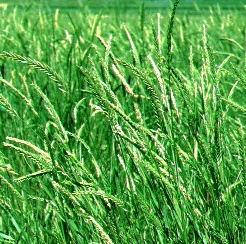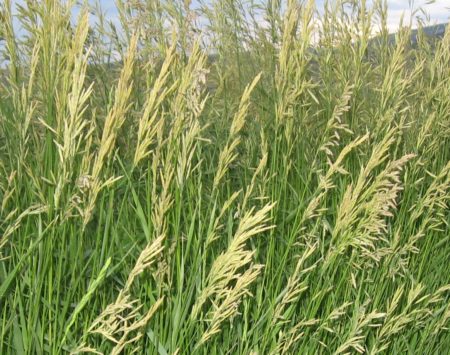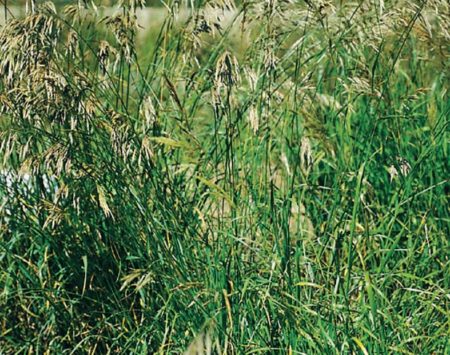Achnatherum hymenoides, Indian Ricegrass
(old nomenclature: Oryzopsis hymenoides) (Native)
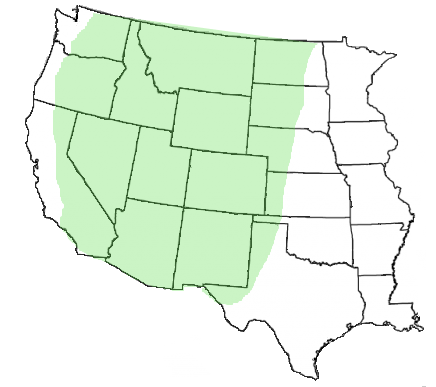
Short to medium height, 8 – 30 inches,long-lived, drought, heat and coldtolerant, cool-season bunchgrass. Adapted to a variety of soil types but does best on sandy and silty soils. Adapted to sites from 2,000 to 10,000 ft. elevation. Not tolerant to wet or poorly drained soils. Fair tolerance to saline and alkaline soil. Very important highly palatable, nutritious forage producer. Moderate tolerance to grazing. The abundant large, plump, nutritious seeds are an excellent food source for birds and small mammals. Seed has a very high dormancy so 3 – 5 years may be required for a stand to establish. Very valuable species for mining and related reclamation, range, watershed and wildlife habitat improvement and wildfire restoration. Minimum precip. is 6 – 8 inches. Plant in fall 1 – 3 inches deep. 162,000 seeds/lb.;)
Named Releases: ‘Nezpar’ (Cultivar) Released in 1978 by Washington PMC. Selected over 152 other accessions for desirable physical plant characteristics and low seed dormancy. Source of ecotype is south of White Bird, ID. Adapted to and establishes well on gravely to loamy to sandy soils in the Northwest and Intermountain regions in as low as 6 inches precip. Considered better for elevations above 5,000 ft. and north of 40 degrees latitude.
‘Poloma’ (Cultivar) Released in 1974 by the NM PMC and AES. Origin of ecotype is west of Pueblo, CO. at 5,000 ft.. Adapted to S.W. regions of western US. Very drought-tolerant, good seedling vigor, good forage, and long lived.
‘Rimrock’ (Cultivar) Released in 1996 by MT PMC, Logan, UT ARS and MT and WY AES. Origin of ecotype is north of Billings, MT. at 3,600 ft. on a sandy soil site averaging 10 -14 inches precip. Selected primarily because of much less early seed shattering than Nezpar or Polama. Has proven to establish well on many adapted sites in the Great Basin and Intermountain area.
‘Star Lake’ (Selected Class) Released in 2004 by the Logan, Utah ARS/AES. Genetically minupulated McKinely Co., NM source. Intended use is for wildland restoration, mining reclamation on sites in the Colorado plateau and AZ/NM plateau.
‘White River’ (Selected Class) Released in 2004 by the Logan, UT ARS/AES and NRCS. Prevariety germplasm genetically manipulated, source from Rio Blanco Co., CO. Intended use is for wildland and mined land restoration in western CO., eastern UT and southwestern WY.
USDA: Plant Profile | Plant Guide
